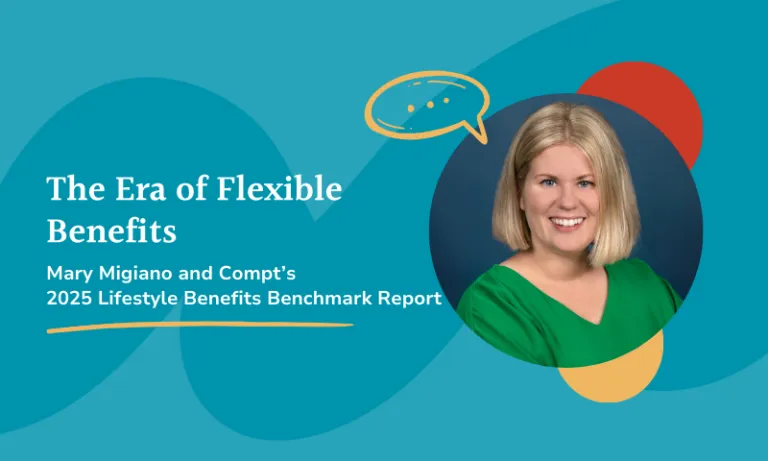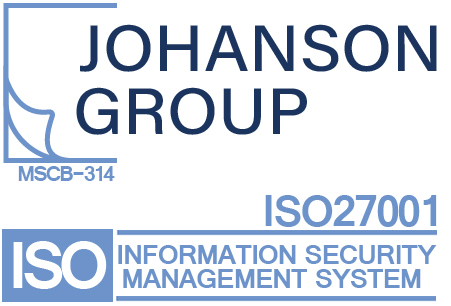Most businesses handle employee expense reimbursements every day. This is especially true if you have a large workforce that needs to travel for work or pay for business-related expenses out-of-pocket (e.g., a design team that buys supplies for projects).
State laws outline whether you are responsible for covering all employees’ work-related expenses. Then, it gets complicated: whether or not they’re taxable, how to account for them, and how to process them.

What is an employee reimbursement?
A reimbursement is a payment a company makes to cover an employee’s out-of-pocket expenses they incurred on the company’s behalf. It’s usually a one-time payment, and it only happens after the employee has already paid for the expense themselves.
Examples of reimbursements include:
- Travel costs (e.g., plane tickets, rental cars, hotel stays)
- Meal expenses during business trips or company events
- Work equipment or supplies
- Project materials or services
- Home office equipment
- Other work-related expenses (e.g., parking fees, tolls)
Those are the basics (obviously, you’ll going to pay employees back for what they spent on the company!).
Beyond business expenses, employers now offer various reimbursements as part of their employee lifestyle benefits package — physical and mental well-being support, commuting costs, and even tuition reimbursement. We talk more about that further down below.
Are employee expense reimbursements counted as taxable income?
The reimbursements are usually not taxable, if these conditions are met:
- It’s a legitimate business expense (e.g., company-related travel, work-from-home equipment, or supplies).
- The employee would be entitled to deduct the cost as an itemized deduction on their taxes (if they paid it themselves).
- The expense was paid under an ‘accountable plan’ (we’ll cover that in a minute).
But things can get tricky if you don’t have a solid reimbursement policy in place. And some reimbursements have special rules, making them potentially taxable to your employees.
So what’s an ‘accountable plan’?
It’s a term the IRS uses to describe a reimbursement or expense allowance arrangement that satisfies all the following three rules:
- The expenses must be incurred in connection with services performed as an employee.
- Employees must provide substantiation of the expenses within a reasonable period (typically 60 days).
- They must return any excess reimbursement or allowance within a reasonable period (typically 120 days).
Substantiation normally takes the form of receipts, invoices, or other documentation that proves the expense was incurred and is in accordance with company policy.

Offer compliant, personalized reimbursements through Compt
Learn more about how to deliver flexible employee reimbursements to your people.
Now…let’s dive into different types of employee expense reimbursements and whether or not they’re taxable.
Per diem travel allowances
A per diem is a daily allowance for all your employees’ meals, lodging, and incidental travel expenses. Instead of reimbursing employees for their meals, travel, and lodging expenses, you can offer them an allowance, the taxability of which is based on the federal government’s per diem rates.
Every October, the General Services Administration (GSA) updates these rates. They differ across locations, and the time of year (high and low season).
If you don’t exceed these per diem rates, you won’t have to worry about employees reporting the excess as taxable income (the per diem allowances are fully deductible).
Per diems have their own rules for substantiation, but they’re easier than tracking every single expense. As an employer, you can gather and track receipts using those figures as their maximum amount.
Meals and entertainment
Are you taking a client to lunch or holding a retreat for your top-performing sales team? There’s a bit of complexity here, so we’ll break it down for you to make things easy.
- Business meals are deductible at 50% on your corporate tax return. However, you can reimburse employees in full.
- Client entertainment is almost always non-deductible — courtside seats to the Lakers game are on entirely on you.
- Since they’re necessary to run a successful business with highly engaged employees, benefits like performance trips, retreats, and experiences are almost always partially or fully deductible — if you can prove there were work-related discussions or activities.
Let’s say you’re flying your team members out for a retreat. They purchase flights, hotel rooms, food, and excursions. With an accurate expense report, you can reimburse and deduct them for all those expenses.
On the other hand, if someone from your sales team wants to win over a potential new client, you can only deduct 50% of the meal’s cost, but you should reimburse them for the whole thing.
Reimbursement for medical expenses
You might offer health benefits through a medical expense reimbursement plan (MERP) instead of a group health plan.
According to 2023 data from the Employee Benefits Research Institute, 74% of employers with more than 500 employees, 32% of firms with 100–499 employees, and 16% of employers with fewer than 100 employees have self-funded health plans, which generally incorporate MERP components.
The most common type of MERP is a health reimbursement arrangement (HRA) a type of employer-funded health benefit that reimburses employees for qualified medical expenses, including premiums, deductibles, and copays.
There are four main types of HRAs:
- Qualified small employer HRA (QSEHRA) – This is only for employers with fewer than 50 employees. It’s tax-free to employees for expenses that qualify under Publication 502. In 2024, the maximum contribution is set at $6,150 for single-employee coverage and $12,450 for family coverage.
- Excepted benefit HRA (EBHRA) – If you do have a group health plan, this HRA option offers limited reimbursement for medical expenses not covered by the group plan (e.g., vision and dental). You can contribute up to $2,100 in 2024.
- Individual coverage HRA (ICHRA) – In an ICHRA, you can set different reimbursement amounts for employees based on job classification (e.g., full-time vs. part-time). Each team member can pay for their health plan through ICHRA reimbursements, and there’s no contribution limit.
- Group coverage HRA (GCHRA) – This type of HRA allows you to reimburse your employees on a group plan for medical expenses the plan doesn’t cover. It’s tax-free and makes high-deductible plans more viable for employees.
HRAs are also tax-free as long as the reimbursements are used to pay for qualifying medical expenses. However, since they are employer-sponsored plans, they are subject to ERISA.
ERISA requires employers to provide plan participants with an annual notice, summary plan description, and other disclosures required by the Department of Labor.
Parking reimbursement and commuter benefits
Parking reimbursement and commuter benefits are tax-deductible employee expenses up to a certain amount. And they’re trending upward — a 2021 survey by Care.com revealed that31% of HR leaders and C-suite executives in the U.S. planned to introduce or expand commuter benefits in the near future. Expenses eligible for tax deduction include:
- Parking fees
- Metered or timed street parking
- Parking expenses employees incur during work-related travel
- Parking at a job site away from the regular workplace
According to IRS Publication 15-B, $325 is the monthly exclusion limit. You can cover the cost of parking up to $325 per month tax-free.
Besides parking, you can also reimburse commuting costs associated with work-related travel that involve a car, bus, train, ferry, or vanpool. Mass transit and commuter highway vehicles fall under this category.
In 2025, the monthly exclusion limit for commuter highway vehicles and transit passes is also $325. This is a different $325, and each exclusion limit can only be used for its specific purpose.
Tuition reimbursement
Tuition reimbursement isn’t directly related to employee business expenses, but 80% of large companies offer it, as do plenty of small and mid-sized businesses.
If you’re going to offer it, there are a few things you have to be aware of:
- The non-taxable contribution limit for each employee is $5,250.
- Tuition reimbursement is only non-taxable until December 31, 2025.
- $5,250 is cumulative. If you offer other education benefits (e.g., student loan stipends), this limit applies to all of them.
If education is a requirement for employment, it’s a working condition fringe benefit. These are tax-deductible as ordinary business expenses even after December 2025. An example would be an employee maintaining certification or taking continuing education courses as part of their job.
Psst: Compt offers an easy way to manage your professional development approval and reimbursement needs in one place on student loan repayments, tuition reimbursement and more. Get in touch with us to get started.
Cell phone reimbursements
In some states, like California, cell phone reimbursement is required. But even if it’s not, offering cell phone reimbursement can be a great perk that doesn’t come with much overhead. And you’ll save money too: According to research conducted by Samsung in partnership with Oxford Economics, a BYOD plan with stipend reimbursements is, on average, $781 cheaper per employee.
You can offer a cell phone reimbursement stipend, a fixed amount you pay each month to employees who use their personal phones for work, or you can reimburse actual expenses.
Either way, the reimbursement is non-taxable as long as employees use their cell phones for work purposes (e.g., calls or sending emails).
Stipend reimbursements
Stipends and reimbursements are fundamentally different. But they don’t have to be mutually exclusive.
With Compt, you can pay out several categories of reimbursable expenses as stipends. This mode, (which we call ‘stipend reimbursements’) has three primary benefits:
- The ‘reimbursement’ element means you won’t have to front the funds.
- You also won’t find yourself paying for unused benefits.
- The ‘stipend’ aspect means your team controls where and how they spend their stipend, making it more personalized and effective.

Let’s examine a few perks (aka lifestyle benefit) categories you might want to offer as stipend reimbursements.
Health and wellness
Gallup reports the true cost of poor employee well-being at 15-20% of total payroll. And nowadays, roughly half of Americans consider personal wellness as a top priority in their day-to-day lives.’
Health and wellness stipends empower your team members with the freedom to choose which health-related expenses they want to prioritize.
Some possible inclusions are:
- Fitness reimbursement (memberships, classes, etc.)
- Exercise equipment purchases
- Sports league fees
- Health coaching services and programs
- Meditation apps
- Fitness trackers
If a gym membership helps someone stay healthy and productive on the job (and trust us, it does), it’s a win-win.
Learning and development
Professional development stipends are tax-deductible. Include expenses for:
- Professional books and ebooks
- Online courses (e.g., Udemy)
- Conferences and workshops
- Certifications and exams
Remember that if the learning materials aren’t explicitly related to job duties, you may need to pay taxes on those benefits. For example, reimbursement for a course or certification that doesn’t apply to their current role or profession falls outside the definition of a business expense.
Psst: Find more examples of how to use professional development stipends in our blog.
Remote work
OfficeRnD’s 2024 Hybrid Work Trends report revealed that nearly a third (28.2%) of full-time employees work a hybrid model, while 12.7% work from home 100% of the time.
That’s roughly 41% of the entire workforce that can benefit from employer-covered technology and tools.
As we mentioned above, a few states require you to cover remote work costs for your employees. Even if you aren’t required to, a remote work stipend is one of the best ways to support your team while keeping expenses manageable. Think of all the ‘home office’ needs:
- Laptops and chargers
- Desks
- Ergonomic chairs
- Headphones
- Monitors
- Microphones
- Video cameras
- Standing desks or treadmill desks
You can reimburse these things with a remote work stipend setup instead of giving everyone a fixed monthly amount. (And trust us, the examples of how to spend work from home stipends are endless!)
Keep in mind that this category includes taxable and non-taxable items. Stipends themselves are taxable, but a business-related expense reimbursement like a laptop or monitor is tax-deductible.
That’s why it’s best to reimburse them separately and give a general remote work stipend for small, miscellaneous items. This way, it’s clear which expenses are specifically for work purposes.

Offer a no-hassle remote work stipend to your team
Reach a spread out workforce with flexible, automated remote work stipends in one platform. Leave the admin work with us.
Why you should offer employee reimbursements

Offering reimbursements as a benefits system has several advantages for employees and employers, such as:
- Cost Control: You can control costs more effectively with reimbursement programs by only paying for expenses that employees actually incur, which helps prevent overspending.
- Flexibility: Reimbursements allow employees to choose the specific products or services that best meet their individual needs. A program like the one Compt provides give employees access to unlimited vendors so they can choose what’s best for them.
- Fairness: Reimbursements promote fairness by reimbursing employees for actual expenses incurred rather than providing a point-solution benefit like a specific wellness app, dependent-care benefits, or tuition reimbursement. At Compt, we use categories of spending (e.g. health & wellness, continuous learning), which empowers your people to select what they need based on their individual needs.
- Compliance: Reimbursement programs help ensure compliance with tax regulations and labor laws.
- Transparency: Clearly outlining eligible reimbursement expenses helps employees better understand and utilize their benefits.
- Alignment with Corporate Culture: Reimbursement programs can be tailored to align with the organization’s values. For example, reimbursing health and wellness expenses reflects a commitment to employee well-being, while reimbursing professional development expenses shows a commitment to employee growth.
- Employee Empowerment: Reimbursement programs empower employees to take control of their benefits and make choices that align with their needs and priorities, leading to greater satisfaction.
- Scalability: A scalable reimbursement program can be easily adjusted to accommodate changes in employee needs or business priorities.
- Competitive advantage: A SHRM survey found that 86% of workers consider employee benefits the most significant factor in deciding to accept or reject a job offer, after salary. And in a 2023 MetLife study, 83% of employees said satisfaction with their benefits package made them more likely to stick with their current company.
By implementing an employee reimbursement program with Compt, employers can enhance employee satisfaction, retain employees, and account for shifting business priorities while being 100% tax compliant.
Setting up your expense reimbursement policy
Overall, reimbursing employee expenses is a win-win for employers and employees. It’s cost effective and adds value to compensation packages, making them more competitive.
To set up your policy:
- Define in writing which expenses you’ll reimburse (and at what rate).
- Share the policy with all your employees (ideally as part of an onboarding guide or handbook).
- Track expenses for compliance and budgeting purposes.
- Reimburse according to a consistent schedule, such as weekly or monthly.
- Maintain clear communication with employees regarding reimbursement procedures and any changes to the policy.
Learn how to set up an employee stipend program in 1 hour using Compt.
With Compt, ensure 100% tax-compliant employee reimbursements
With Compt, setting up employee stipends is as simple as possible. Set up stipend and reimbursement categories, assign amounts, and have employees submit expenses for approval.
Once approved, the reimbursements are automatically included in payroll (we integrate with your payroll software). Employees will see it on their next paycheck.
The platform will auto-create expense reports, too. This way, you have a record of all expenses that require reimbursement for tax purposes. And your accounting and finance teams will have everything they need for budgeting and compliance.
Request a demo to see how Compt works.
Editor’s Note: This post has been recently updated for clarity and relevance for our readers.






